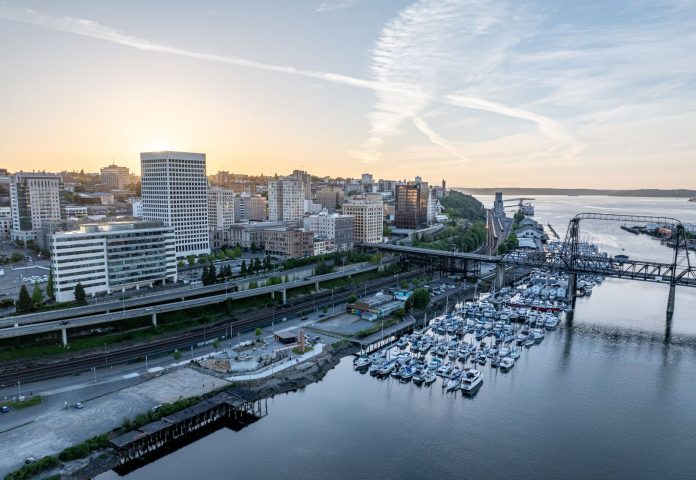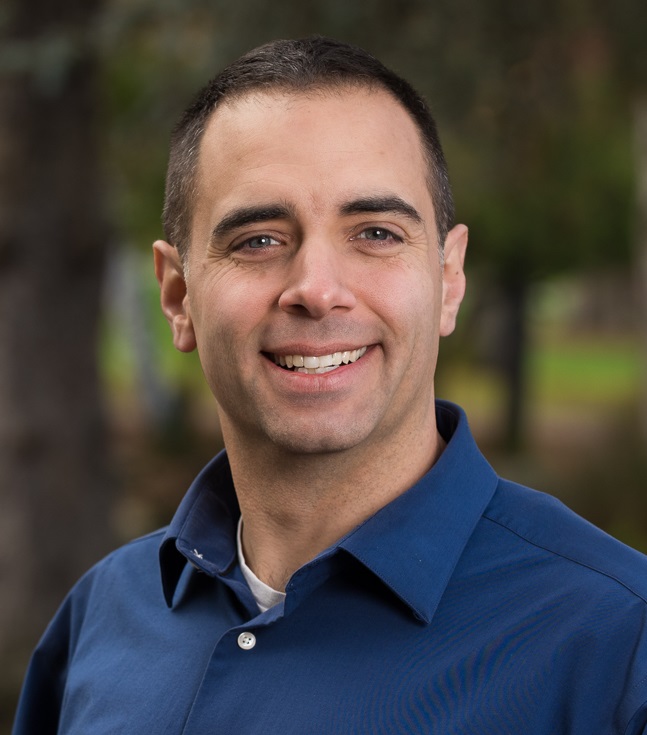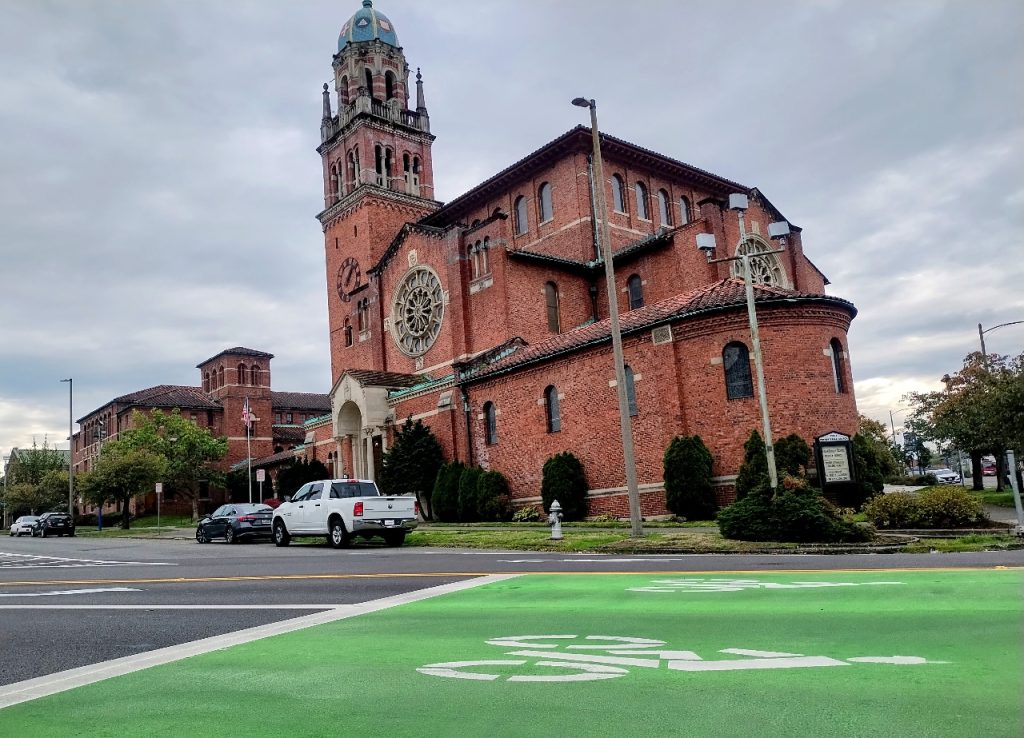
Voters will narrow the field for Tacoma mayor and city council seats, with housing, gun violence, and pedestrian safety pressing issues.
Tacoma, the state’s third-largest city, known affectionately to its inhabitants as “Grit City” (or “City of Destiny” if you prefer) is at a crossroads. The city’s primary election – ballots are due by August 5 – will shape the next four years in this growing urban center that’s home to 228,000 people.
Tacoma’s primary election will narrow the field in races for mayor and three city council positions, and one Pierce County Council seat via a special election in District 5. (Check out The Urbanist’s endorsements for how the elections committee landed after touching base with the candidates.)
The two largest fundraisers in Tacoma’s six-way mayor race are John Hines ($189,000) and Anders Ibsen ($175,000), leading the field by a wide margin. This suggests they are the favorites to make it through the top-two primary, unless another candidate pulls off an upset.

The next mayor will guide Tacoma throughout a pivotal and tumultuous time. The south Puget Sound metropolis, which celebrates its 150th birthday this year, faces a host of pressing issues as it continues a pattern of steady growth and faces the impact of federal funding cuts and destabilizing Trump Administration policy changes.
Housing issues
Housing and cost-of-living issues are some of the most pressing. Tacoma went bold in creating its 25-year One Tacoma comprehensive plan, which envisions a city of 325,000 residents by 2040. The plan, published in 2024 and approved earlier this year, has already prompted the city to pass a package of zoning changes known as “Home in Tacoma” — designed to promote increased density and middle housing options.
The plan, which hews closely to new state guidelines set out in HB 1110, allows middle housing options in areas 1/8 mile from parks, neighborhood centers, schools and colleges – and within a ¼ mile of frequent transit. It also increases the number of zoned areas that allow for mutliplex options and other high-density options – though achieving the city’s housing goals of more than 59,000 units by 2040 will require even more ambitious zoning reforms.
Surging gun violence
In addition, Tacoma and its surrounding suburbs are in the midst of a troubling surge in gun violence – especially among young people. After a record number of homicides in 2022 (45 in Tacoma and a total of 79 for all of Pierce County) Mayor Victoria Woodards in 2023 called for action, seeking to nearly double funding for youth violence prevention programs. (Woodards is blocked from seeking a third term due to Tacoma’s term limits.)
Though the Tacoma Police Department put in place a violent crime reduction plan in 2022 that increased enforcement in “hot-spot” areas, results have been mixed, with violent crime dropping in hot spots but rising elsewhere. Tacoma Public Schools, in collaboration with the city and a host of nonprofits, started a teen activity program at 12 locations, Summer Late Nights, that helped drive a temporary dip in violence.
But this year, shootings resumed unabated. This spring, three teens died in two separated shooting incidents in Tacoma and Spanaway and in a letter to parents, schools superintendent Joshua J. Garcia wrote, “The death of a child hits me like a punch in the gut.”
Road safety challenges
Transportation is another critical challenge facing the city, with an increasing need for more transit and pedestrian safety improvements.
Key to Tacoma’s transit future is Sound Transit’s recently announced light rail route connecting the Tacoma Dome district with Federal Way and destinations north, which is expected to be complete in 2035. Though a proposed future bus rapid transit (BRT) system is the responsibility of Pierce Transit and will likely require a new county transportation funding measure, the City of Tacoma will be integrally involved in the process of planning, creating dedicated bus lanes, and other aspects of the proposed “Stream” BRT network.
Pedestrian safety is also a serious concern. According to data from the Washington Traffic Safety Commission, there were 30 pedestrian traffic-related deaths in Pierce County in 2024, a 10-year-high. In Tacoma, deaths plus serious injuries to pedestrians rose to nearly 200 in 2023, nearly double the rate in 2019. This mirrored an alarming road safety trend throughout the South Sound.
Despite adopting a Vision Zero plan in 2020, Tacoma began to backpedal on improvements, slashing its road safety budget by 90% in its 2025-2026 budget. Making matters worse, Tacoma voters in April narrowly rejected a street safety improvement levy that would have repaved 223 miles of streets, improved between 130 and 170 miles of bike infrastructure, and upgraded 250 to 300 miles of sidewalks.

Tacoma’s new mayor and city council will have to find an alternate plan to deal with Tacoma’s unsafe streets, which per capita are 4.5 times more deadly than Seattle’s.
With its city manager system, the position of mayor in Tacoma is a relatively ceremonial position – but the mayor does have a bully pulpit and can also set the direction of the council’s legislative and budget agendas.
On top of these challenges, the council and mayor will also have two large job vacancies to address: the powerful city manager position and Tacoma Chief of Police.
Former city manager Elizabeth Pauli, who had served since 2017, retired on July 1. One of the highest-paid public offices in the state, Tacoma’s city manager is the executive responsible for running city agencies and managing some 2,000 city employees. Interim executive Hyun Kim will serve until the new council makes its hiring decision next year.
In addition, the council will need to approve a new chief of police after Tacoma Police Chief Avery Moore resigned in January after being suspended for “personal use of city assets.”
Mayor of Tacoma
Ibsen, who was endorsed by The Urbanist in the primary, is a former two-term member of the Tacoma City Council, first elected in 2011. On the council Ibsen worked to pass a tenant protection act in 2018, was behind the Tacoma Anchor Network, which coordinates the efforts of nonprofits, universities, hospitals, and other large institutions in the city on hiring and seeking grants. He’s currently the owner and manager of a Windermere real estate brokerage.
In his Urbanist questionnaire, Ibsen said he supports “upzoning tied to transit expansion opportunities,” and notes that he campaigned for city council in 2015 on a platform of “livable density.” He observes that he’s “a big proponent of social housing,” In terms of pedestrian safety, he responded that “I want to see Tacoma’s streets safer and focus on what we know works: prioritizing people over cars.”
On public safety, Ibsen wrote that making people in Tacoma feel safe “starts by addressing the roots of our public safety crisis by ensuring mental health professionals are available around the clock to respond to crises, so people get care, not handcuffs.”
Asked what his top priority will be as mayor, Ibsen said, “My number one priority is restoring public trust in City Hall by delivering real results on the issues people care about most, like addressing housing affordability, improving public safety, and promoting economic fairness.
“I have spoken to thousands of many Tacoma residents the last several months — all corners of the city — and I hear the same thing at their doors: They all feel ignored by a city government that’s slow to respond yet quick to make excuses.”
When asked what he’ll do as mayor to address the narrow failure of the street improvement levy, Ibsen said, “The narrow failure of Tacoma Streets II was a loud and clear signal: people do want safer streets and public investment in their neighborhoods — but they also need to trust that their tax dollars are being spent wisely and transparently. Residents are tired of projects that drag on for years, with little accountability and poor communication from City Hall.
“As mayor, I’ll work with public works and lead redesigns to our streets to naturally slow traffic and prevent crashes. I’ll also prioritize working directly with neighborhoods to identify high-risk areas and focus investments there first — especially in under-served communities.
John Hines, a former high school history teacher, ran against Ibsen for city council in 2015 and lost, then won that seat in 2019, defeating union activist Nathe Lawver. Hines won a second term in 2023. During his time on the council, Hines supported the Home in Tacoma land use reform packages, a 1/10th of 1% sales tax for affordable housing, as well as pushing to build tiny home villages.
Hines told Tacoma Weekly that one of his proudest accomplishments was sponsoring and passing an ordinance prohibiting public camping within 10 blocks of temporary shelters and 200 feet from shorelines and waterways.
In his Urbanist questionnaire, Hines said his top priorities include “building more housing at all income levels, creating a safer and more accessible transportation network, and advancing a green, inclusive economic development strategy.” On transit, Hines notes that “as a Pierce Transit Commissioner, I’ve prioritized expanding reliable, frequent transit so people can live car-free or car-light.” In terms of improving pedestrian safety, Hines touted his work renewing Tacoma’s Transportation Benefit District and support for using automatic speed camera ticket revenue to fund safety improvements.
Asked this week what his number one priority is, Hines replied, “Public safety. We want this [to] be a safe place for everyone, and that includes having a fully staffed Police Department to address some of the criminal activity we’re having. And also our alternative response models: our HOPE team – how our Fire Department deals with mental health calls; community service officers that respond to non-emergency, non- violent calls; and our HEAL team, which does homelessness outreach and engagement. So, really addressing public safety from a holistic viewpoint.”
On the failure of the Tacoma Streets II safety levy to pass, Hines said, “That was a real setback for us. It’s one of my goals, as mayor, to come back with another package. What I want to do before we come back to the voters, is to really spend some time over the next year, building support for the package. So working with multimodal supporters — advocacy groups, people with disabilities, our chamber of commerce, community groups — to really build support ahead of time about what they want to see in the package for the voters. I think that will help us be more likely to pass it in the end, and really make transformational investments in our infrastructure.”
Others running for mayor are Whitney Stevens, a business owner, former chair of the Downtown Merchants Association, community activist and chair of the 27th Legislative District Democrats; and Jesus “Jesse” Carlos, a former US Army Ranger and member of the Tacoma Human Services Commission. Steve Haverly and Anthony Ginn will also appear on the primary ballot, but have yet to report any campaign contributions and did not participate in The Urbanist’s endorsement process.
Stevens’ questionnaire responses and background suggest a decidedly urbanist platform, but she has not garnered the same institutional support as frontrunners Ibsen and Hines.
Tacoma City Council
There are currently three Tacoma city council seats on the primary ballot: District 4, District 5, and the at-large seat, Position 6. The District 2 seat is also up but has only two candidates so both will advance to the general election without a primary. Seat 6 has a total of six candidates running.
For District 4, The Urbanist Elections Committee endorsed Silong Chhun, who lives on Tacoma’s Eastside, immigrated to the U.S. from Cambodia in his youth, and who worked in communications for the Office of the Attorney General and former Governor Jay Inslee. Chhun is running against Sandesh Sadalge, who was appointed to the council seat in July 2024 to replace council member Catherine Ushka, who died in office after a battle with cervical cancer. Israel James McKinney is also running, but has not reported any fundraising yet.
In his Urbanist questionnaire, Chhun said one of his top priorities is support for the Workers Bill of Rights, which would raise Tacoma’s minimum wage to $20, and increasing tenant protections. He noted that he supports fast-tracking accessory dwelling units (ADUs), offering density bonuses in zoning, and speeding up permitting.
Sadalge, a small business owner, says on his campaign site he’ll work to increase affordable housing, address crime at the root causes and with “ well-funded, well-staffed, and well-trained police force and alternative response teams.”
In District 5, The Urbanist endorsed community activist Zev Rose Cook, who helped lead the successful campaign to pass a tenant protections ballot measure in Tacoma in 2023. Cook is facing incumbent Joe Bushnell, who formerly worked for the Washington Hospitality Association, and who was elected in 2021 and supported a bill that banned homeless encampments near shelters and waterways, which passed in 2022.
The race has drawn attention with a controversial mailer funded by a political action committee (PAC) supportive of Bushnell that inaccurately claims that Cook supports defunding the police.

In her Urbanist questionnaire, Cook says she supports raising the minimum wage, building a social housing system similar to one passed recently in Seattle, progressive income tax, and city-owned grocery stores. Bushnell, in his questionnaire, noted his support of the Homes in Tacoma zoning reform package, supporting construction of more ADUs and other duplexes/quadplexes, and pointed out he’d voted to fund 30 more police officers.
In Seat 5, the Urbanist endorsed Krista Perez, an author, small business owner, and child of immigrants who lives in Tacoma’s eastside. In the crowded field, Perez is even in fundraising ($34,000) with property manager Hilltop Business Improvement Area leader Jessica Johnston ($34,000) and above small business owner Latasha Palmer ($25,000). Others in the race are government employee Lindsay Willis, Hunter D. Henderson, a planner for the Washington State Department of Transportation, and Todd Briske, who unsuccessfully ran for Position 8 in 2023.
In Perez’s Urbanist questionnaire, she said she supports building more affordable housing, is fully supportive of the Home in Tacoma zone reform initiative, new sources of progressive revenue, and working to find an alternative to the failed Tacoma Street II levy, including “securing alternative funding for critical safety upgrades and working with city leaders, planners, and community organizations to prioritize people-first infrastructure. That means traffic-calming measures, better street lighting, safer crosswalks, and dedicated space for non-drivers.”
Pierce County Council District 5 race
On the Pierce County council, Bryan Yambe is running to retain his seat in District 5, which he was appointed to in January 2025 after it was vacated by Marty Campbell, who was elected Pierce County Assessor-Treasurer. Yambe was elected three times to the Fife city council in 2015, 2019, and 2023, He’s been involved in the Pierce County Young Democrats, 25th Legislative District Democrats, and the Washington State Labor Council.
Yambe faces Kimber Starr, a former small business owner, and business owner Terry Wise.
Yambe, on his website, says supports increasing housing supply by streamlining permitting, expanding transit services, and creating more opportunities for first-time home buyers.

Andrew Engelson
Andrew Engelson is an award-winning freelance journalist and editor with over 20 years of experience. Most recently serving as News Director/Deputy Assistant at the South Seattle Emerald, Andrew was also the founder and editor of Cascadia Magazine. His journalism, essays, and writing have appeared in the South Seattle Emerald, The Stranger, Crosscut, Real Change, Seattle Weekly, the Seattle Post-Intelligencer, the Seattle Times, Washington Trails, and many other publications. He’s passionate about narrative journalism on a range of topics, including the environment, climate change, social justice, arts, culture, and science. He’s the winner of several first place awards from the Western Washington Chapter of the Society of Professional Journalists.
